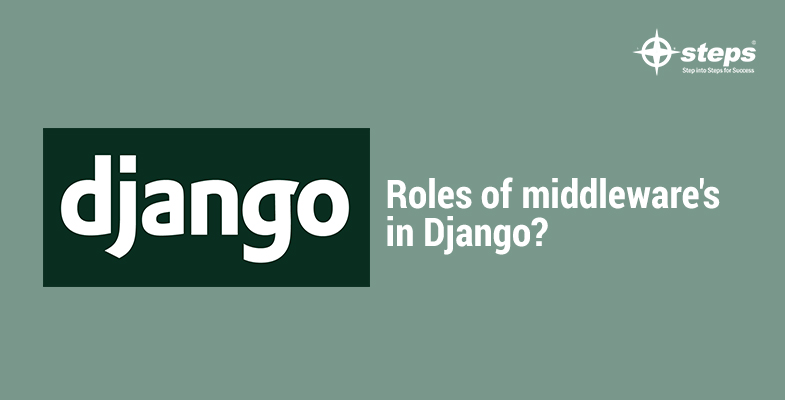Roles of middleware’s in Django?
Introduction
A middleware is a process that operates on a data stream, often between two services. It is executed in the “middle of the pipeline” between services and the application. The role of middleware in Django applications can be addressed in two different ways. First, there is the pre-programmed middleware that you will use by following instructions found on Django-middlewares (the official Django website). Second, there are some parts of your application that you would like to handle as a middleware function. In this article we’ll cover both approaches, giving an overview of what they are and how to implement them into your projects. If you are interested to learn about Django you can check out Python Full Stack developer training in Kochi.
The idea of middleware is to make sure your application behaves how you want it to, by implementing some logic that would otherwise be hard or impossible to implement. We’ll cover the two most common forms of middleware – pre-programmed middleware and custom middleware.
Pre-programmed middlewares
In Django, there are pre-programmed parts of our application that we want to add to our code. These parts of the application can be handled by placing them at the beginning of our application. These parts are called middlewares and are usually used to enhance the behaviour of our application. The middleware is usually executed before any other action in your application and thus determines what happens on that step. For example, if you want to add some validation to an API call before you perform that request to prevent Unauthorized Access or if you want to update a template before rendering it, this can be done by implementing a middleware.
There are a few pre-programmed middlewares in Django that you should take a look at for your applications, for example:
Middleware for logging
Logging is an important step in ensuring the stability of your application. One notable feature of Django is that it uses log files to transfer log information from one phase to another. The execution of the application itself is logged too. For more information on how Django handles log information please read the official developer guide here. Django also has a log-middleware module that you can use to send the various thing to Django’s log files. If you are interested in this middleware, then read more about it here.
Middleware for file uploads
If you have a user that needs to upload something and have your application using some form object, then you can use the Django FileUploadMiddleware, which will ensure that any uploaded files are uploaded into the specified directory (if the uploader is set). This means there is no need to create any temporary files and that the application won’t run out of disk space.
Middleware for sessions
Django has an official middleware for sessions, which allows you to store some information about the user between your application and the database. This is great for some applications like forums or blogs, where you want to store information about the user. If you want to know more about sessions in Django then read this article.
Middleware for cookies
This middleware is useful if your application requires cookies. It handles all cookie-related tasks like setting and getting the value of a cookie, deleting a cookie, or setting a cookie’s life span. If you want to read more about this then please refer to this article on storing data in cookies.
Custom middlewares
Besides the pre-programmed middleware, there are options for us to create our middleware for our application. This means that we can add any logic to this middleware by doing some server-side checks, or even by changing the API call itself. This is done with a simple python function in a module named __init__.py , which you need to place in a folder. The name of this folder is what will be called when Django runs that function as its middleware. You can also use this function to register a new middleware, but as long as it is in the same folder as your current application’s __init__.py file then this will do.
Django-middlewares provides several ready-made implementations of middleware, which you can use without having to create your own. To import them into your projects, you need to add a few imports into your __init__.py file:
from django.contrib import Middleware from django.core import request from django.http import HttpResponse, redirect # … # add other imports here…
Conclusion
There are two approaches to dealing with middleware in Django applications. You can use the pre-programmed middleware by following the instructions on Django-middlewares (the official Django website). Second, you may want to use a middleware function to handle some aspects of your application. Implementing middleware, for example, can be used to add some validation to an API call before performing that request to prevent Unauthorized Access. Django-middlewares provides several ready-to-use middleware implementations that you can use instead of writing your own. This means that we can add any logic to this middleware, such as server-side checks or even modifying the configuration. If you want to be a professional Django developer you can check out Python Django developer training in Kochi.

